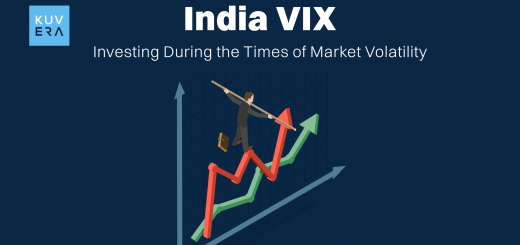Trading vs investing: what’s better?
If you have started to invest in stocks, you might have thought of this question. But can you invest in stocks without trading? Or, is the question of trading vs investing even relevant?
Get meaningful insights on stock performance in terms of sector, industry and periodic returns through Kuvera. Check here.
Let us dive deep into the trading vs investing debate:
| S. No. | Particulars | Trading | Investing |
|---|---|---|---|
| 1. | Time Horizon | Short-Term Focus: Traders typically operate with a short-term perspective, ranging from minutes and hours (day trading) to days, weeks or months (swing trading). Their goal is to capitalize on short-term price movements. | Long-Term Focus: Investors generally adopt a long-term perspective, often holding assets for years or even decades. Their goal is to build wealth gradually through capital appreciation and income generation. |
| 2. | Strategy | Technical Analysis: Traders often use technical analysis, which involves studying price charts and using indicators like moving averages, Relative Strength Index (RSI), etc. to make buy or sell decisions based on patterns and trends. Market Timing: Successful trading relies on precise timing. Traders aim to enter and exit positions at advantageous times to maximize profit from short-term market fluctuations. | Fundamental Analysis: Investors use fundamental analysis to evaluate a company's financial health, performance and growth potential. This includes analysing financial statements, earnings reports, industry trends and economic factors. Buy and Hold: The investing strategy typically involves buying assets such as stocks, bonds or real estate and holding them long-term, benefiting from the growth and compounding returns. |
| 3. | Frequency | High Frequency: Traders may execute a high number of trades within a short period. For instance, day traders might make multiple trades per day, while swing traders might hold positions for several days to weeks. | Low Frequency: Investors generally trade less frequently, focusing on long-term gains rather than short-term price movements. They may periodically review their portfolio and make adjustments based on long-term goals. |
| 4. | Risk and Reward | Higher Risk: Trading often involves higher risk due to the volatility and rapid pace of the market. Potential for significant gains comes with the potential for substantial losses. Leverage: Traders might use leverage to amplify their positions which can increase both potential returns and risk. | Lower Risk: Long-term investing usually involves less risk compared to short-term trading as it is less affected by short-term market fluctuations. Compounding Growth: Investors benefit from the power of compounding returns over time which can lead to significant wealth accumulation. |
| 5. | Tools and Techniques | Technical Indicators: Traders frequently use technical indicators, chart patterns, and other tools to predict short-term price movements. News and Events: Short-term price movements can be influenced by market news, economic data releases and other events. | Fundamental Metrics: Investors often use metrics such as price-to-earnings (P/E) ratio, dividends, earnings growth and return on equity (ROE) to assess the value of an investment. Diversification: Investors typically diversify their portfolios to manage risk and achieve stable returns over the long term. |
| 6. | Cost | Transaction Costs: Frequent trading can lead to higher transaction costs, including brokerage fees and spreads. | Lower Transaction Costs: Investing usually incurs lower transaction costs compared to frequent trading as it involves fewer transactions over a longer period. |
Difference between Investing & Trading
Trading and investing are two distinct approaches to engaging with financial markets, each with its own strategies, goals and time horizons. Both trading and investing have their merits, and the choice between them depends on individual goals, risk tolerance, time commitment and financial expertise. Some individuals may also combine both strategies in their financial approach, using trading for short-term opportunities while maintaining a core investment portfolio for long-term growth. Below table highlights the differences between both:
Start investing in Index Funds.
Different types of Investing & Trading
Investing and trading encompass a variety of approaches and strategies, each with its own set of techniques and objectives.
Types of Investing
1. Value Investing
-
- Focus: Identifying undervalued stocks that are trading below their intrinsic value.
- Approach: Investors look for companies with strong fundamentals such as solid earnings, low debt and good management. They often use metrics like the P/E ratio, book value and dividend yield.
- Example: Warren Buffett’s strategy with Berkshire Hathaway, focusing on buying companies with strong fundamentals at a discount.
2. Growth Investing
-
- Focus: Investing in companies expected to grow at an above-average rate compared to other companies.
- Approach: Investors look for companies with high potential for revenue and earnings growth. Valuation may be based on future earnings potential rather than current earnings.
- Example: Investing in technology or biotech firms that have high growth potential.
3. Income Investing
-
- Focus: Generating regular income through investments.
- Approach: Investments typically include dividend-paying stocks, bonds, or real estate. The goal is to achieve a steady stream of income, such as interest or dividends.
- Example: Investing in dividend aristocrats or municipal bonds.
4. Index Investing
-
- Focus: Investing in a broad market index to match the performance of the overall market.
- Approach: Investors use index funds or exchange-traded funds (ETFs) that track major indices like the S&P 500. It provides diversification and minimizes individual stock risk.
- Example: Buying shares in an S&P 500 index fund.
5. Socially Responsible Investing (SRI)
-
- Focus: Investing in companies that align with specific ethical, social, or environmental criteria.
- Approach: Investors select companies based on their practices related to social responsibility, sustainability and governance.
- Example: Investing in green energy companies or firms with strong environmental, social and governance (ESG) practices.
6. Real Estate Investing
-
- Focus: Investing in real estate properties for rental income or capital appreciation.
- Approach: Investors may buy residential, commercial, or industrial properties. They can also invest through real estate investment trusts (REITs).
- Example: Purchasing rental properties or investing in a REIT.
7. Retirement Investing
-
- Focus: Building a portfolio for long-term retirement goals.
- Approach: Investors typically use tax-advantaged accounts like 401(k)s or IRAs, focusing on a diversified mix of assets to provide income during retirement.
- Example: Contributing to a diversified portfolio of stocks, bonds, and mutual funds in a 401(k) plan.
Types of Trading
1. Day Trading
-
- Focus: Capitalizing on short-term price movements within a single trading day.
- Approach: Traders make multiple trades throughout the day, closing all positions by the end of the day. They use technical analysis and real-time data to make quick decisions.
- Example: Buying and selling shares of a stock multiple times in a single day based on intraday price movements.
2. Swing Trading
-
- Focus: Profiting from short- to medium-term price swings or trends.
- Approach: Traders hold positions for several days to weeks, aiming to capture short- to medium-term movements. They use technical and fundamental analysis to identify trading opportunities.
- Example: Buying a stock and holding it for a few weeks, hoping to benefit from a price uptrend.
3. Scalping
-
- Focus: Making small profits from tiny price changes over very short periods.
- Approach: Scalpers execute a high volume of trades to accumulate small gains, often holding positions for seconds to minutes. This strategy requires a significant amount of time and attention.
- Example: Executing numerous trades in a few minutes to capitalize on minor price fluctuations.
4. Momentum Trading
-
- Focus: Trading based on the strength of recent price trends.
- Approach: Traders buy securities showing upward momentum or short-sell those with downward momentum. They use technical indicators to gauge momentum and potential continuation of trends.
- Example: Buying a stock that has been rising sharply and selling it when the upward trend shows signs of slowing.
5. Algorithmic Trading
-
- Focus: Using computer algorithms to execute trades based on predefined criteria.
- Approach: Traders use automated systems to place trades at optimal times and prices often based on complex mathematical models and high-frequency trading strategies.
- Example: High-frequency trading firms that use algorithms to execute large volumes of trades within milliseconds.
6. Position Trading
-
- Focus: Holding positions for weeks to months based on fundamental analysis and longer-term trends.
- Approach: Position traders use both technical and fundamental analysis to identify long-term trends and hold positions for extended periods, unlike shorter-term traders.
- Example: Buying a stock based on a long-term growth trend and holding it for several months.
7. Arbitrage
-
- Focus: Exploiting price differences of the same asset in different markets.
- Approach: Traders simultaneously buy and sell the asset in different markets to profit from price discrepancies.
- Example: Buying a stock on one exchange where it’s undervalued and selling it on another where it’s overvalued.
Kuvera can help you track the stock market and look for daily market gainers, losers and stocks on 52 week high and 52 week low.
Wrapping Up
There are different types of investing and trading products and methodologies available for investors. You can choose the suitable product or methodology and match it with your financial goals to get the best out of them. This would solve the trading vs investing debate for you.
Interested in how we think about the markets?
Read more: Zen And The Art Of Investing
Watch here: Investing In Passive Funds
Start investing through a platform that brings goal planning and investing to your fingertips. Visit kuvera.in to discover Direct Plans of Mutual Funds and Fixed Deposits and start investing today.
AREVUK Advisory Services Pvt Ltd | SEBI Registration No. INA200005166
DISCLAIMER: Mutual Fund investments are subject to market risks. Read all scheme related documents carefully. Registration granted by SEBI, membership of BASL (in case of IAs) and certification from NISM in no way guarantee performance of the intermediary or provide any assurance of returns to investors. Investments in securities market are subject to market risks. Read all the related documents carefully before investing. The securities quoted are for illustration only and are not recommendatory.












